Many people mistakenly believe that opioid addiction refers to a junkie using heroin. However, this is not always the case. Typically, most addicts become hooked on prescription pain killers and not street drugs. They mistakenly believed that their physician had their best interest in mind when they prescribed the potent medications. Up to 29 percent who are prescribed opiates end up abusing the drugs and become addicted. Many addicts struggle to get clean but the withdrawals are often so severe that they simply cannot kick the habit. However, there is hope in the form of an herbal supplement known as kratom. In this article, we will explore the best kratom for opiate withdrawal.
Table of Contents
- What is Kratom?
- Kratom History
- Kratom and Opioids
- How Does Kratom Work?
- Traditional Opioid Therapies
- Kicking the Opioid Habit
- Understanding Opiate Withdrawal
- Symptoms of Opiate Withdrawal
- Exploring the Best Kratom for Opiate Withdrawal
- Kratom Dosage of Opiate Withdrawal
- Use Only Premium Kratom Strains
- Buying Best Kratom for Opiate Withdrawal
- How Long to Use Best Kratom for Opiate Withdrawal?
- Kratom Safety
What is Kratom?

Kratom Capsules
In the United States, many people have never heard of kratom. The herbal supplement is obtained from the leaves of evergreen Mitragyna Speciosa trees that grow in Thailand, Myanmar, Malaysia, and parts of Southeast Asia. Interestedly, the tree is classified in the coffee tree (Rubiaceae) family. Locals have regularly used kratom for medical properties. They chew the leaves or brew a tea. In many cases, the tea is enjoyed at the end of a long day of labor or during festivals. It is also a social drink that is commonly shared with family and company.
Kratom History
H. Ridley started to report about kratom use for opiate withdrawal in 1897. He noted that it was an acceptable ‘cure’ for opioid dependence. In New Zealand, the plant’s active alkaloid Mitragynine is commonly used as a treatment for methadone dependence. In many cases, those seeking drug treatment are given methadone to conquer the opioid addiction and end up also addicted to the methadone. Kratom has historically been used as an alternative treatment for a variety of conditions.
Kratom and Opioids
When exploring the best kratom for 0piate withdrawal it is important you remember that kratom isn’t in any way an opioid. It does not get you high like opium-based drugs. However, it does minimize withdrawal symptoms that happen when you are trying to kick an opioid addiction.
How Does Kratom Work?
Within the kratom plant are alkaloids. Interestingly, the alkaloids react with the same reactors in the body as opioids do. In fact, kratom is the only plant that works on the same receptors in the brain as opium that is extracted from the poppy plant. Many users consider the effects of kratom to be like that of oxycontin, opium, heroin, or morphine. Although, reduced and not as addictive. However, it is the alkaloid’s ability to work with the same brain receptors that make it an invaluable tool to combat opium addiction.
Traditional Opioid Therapies
Addiction devastates lives. However, when an addict finally decides to get clean then it is imperative that they seek some form of treatment help because of the extreme withdrawals. Current opioid treatments include medication-assisted treatment (MAT) which involves the use of methadone or buprenorphine. Sadly, MAT is not without its own dangers. Methadone is highly addictive, and you might need to seek treatment for methadone addiction even if you kick the opioids. Other treatment options include behavioral psychotherapies and even mental-health counseling. The best kratom for opiate withdrawal works well when combined with other traditional therapies.
Kicking the Opioid Habit

Coping with Opiate Addiction
Most addicts decide to seek addiction therapy either as an outpatient or at an in-patient residential facility. Sadly, the cost of rehab, whether in or outpatient, is extreme. If you do not have insurance coverage, then you’ll probably have a hard time paying for the treatment to kick the opioid habit. Sometimes, to curtail costs, you might decide to go cold turkey and just try to get clean on your own. Unfortunately, the withdrawals are often more than most people can handle and often leads to relapse. However, if you decide to use kratom as a withdrawal aid then you stand a better chance of making it to sobriety.
Understanding Opiate Withdrawal
Opiates are a variety of drugs that are derived from the poppy plant. They can include morphine, oxycontin, heroin, hydrocodone, and more. They act quickly because the brain’s receptors are very welcoming to all opium-based drugs. The physiological interaction quickly works to trigger a release of the neurotransmitter dopamine which works to suppress another neurotransmitter noradrenaline. You can quickly become dependent on opiates as the brain adapts and stars to produce even greater levels of dopamine while reducing the production of adrenaline. If the brain does not have an opiate, then it appears to struggle with what is ‘normal’ and cannot balance the dopamine and adrenaline. Such an imbalance is what leads to withdrawals.
Symptoms of Opiate Withdrawal

The Physical Withdrawals of Opiates
Many factors dictate the degree of withdrawal such as exactly how dependent you are on opioids.
Symptoms of opiate withdrawal include:
- Excessive sweating
- Muscle aches
- Watery eyes
- Runny nose
- Abnormal sleep patterns
- Vomiting
- Shakiness
- Diarrhea
- Restlessness
- Elevated blood pressure
- Rapid heart rate
- Cramping
- Vomiting
Typically, it takes 12 to 3o minutes to start experiencing opiate withdrawal symptoms. You can start to suffer from addiction within four to 10 days of using opioid drugs consistently.
Exploring the Best Kratom for Opiate Withdrawal
Do you want to get clean and stop using opioids? If so, then you might want to try kratom to help you cope with the often-debilitating withdrawals. If you are unfamiliar with kratom, then you might know what are the best kratom strains for opiate withdrawal. Honestly, there are a lot of great kratom types that can help ease you through the transition, but a few do stand out above the rest.
- Red Vein Bali
- Maeng Da
- Red Vein Borneo
- Green Vein Thai
- White Vein Thai
- Green Malay
Kratom Dosage of Opiate Withdrawal
In low doses, kratom works to activate the brain’s delta receptors and in greater doses, it activates the brain’s mu receptors. Remember, what dosage works for one person might not work for another. If you are a frequent kratom user then you’re going to need a higher dosage, then if you have never or rarely used the herbal supplement.
Ideally, you should take three to seven grams of kratom. If you exceed eight grams of kratom then you’ll more than likely experience a strong sedative reaction.
Use Only Premium Kratom Strains
It is imperative that you pick the best kratom for opiate withdrawal. With kratom, quality does matter, and you will experience a far greater reaction if you use premium, top-shelf herb versus something that is inferior. Always take the lowest dose needed to achieve the results that you desire.
Buying Best Kratom for Opiate Withdrawal
Luckily, you do not need a doctor’s prescription for kratom. You can order quality kratom from an online retailer or purchase it in a local smoke or vape shop. However, you’ll probably buy the best quality online. The kratom at brick and mortar shops might be older or less potent. You can choose from crushed levels, capsules, or powder. Many people like to bowl the leaves to brew a tea that helps make them feel better. You can also mix the kratom powder in a beverage or smoothie. Kratom capsules give you the freedom to use the product anywhere.
If in the event you have approval from your physician to consume best Kratom for opiate withdrawal within a controlled therapeutic environment please see the below.
Below are the steps you need to use kratom to overcome opiate withdrawal:
- Buy at least seven to eight ounces of the best kratom for opiate withdrawal
- Drink a pure and refreshing beverage while you take the kratom.
- Stop using opiates completely. You cannot just lower the amount you use. Instead, you must stop using the drug completely
- Use kratom in place of opiates
- On the first day try to lower the amount of kratom
- Continue taking kratom for at least two more days
- Exercise daily
- Drink plenty of water
- Eat a balanced meal
- Stay clean
How Long to Use Best Kratom for Opiate Withdrawal?
Detox can take three to five days when you finally decide to get clean. Ideally, you should use kratom for at least one to two weeks so you can gain the greatest benefits to cope with the discomfort of opiate withdrawal and combat the desire to use again.
Kratom Safety
Kratom is powerful. The alkaloids can significantly help you combat opiate withdrawal. You have probably heard that kratom is rumored to be addictive. However, with responsible use, you can avoid any form of kratom dependence. You should only take kratom in moderation and then slowly stop using the herb. Ideally, a smooth transition is your best bet, so your mind and body have time to adapt.
There are no serious side effects associated with kratom. Some users might report mild nausea or vomiting but it’s rare.
Always use the best kratom for the opiate withdrawal but please note that My Kratom Club does not promote the use of kratom as a substitute for opiates or any other health condition. If you have an addiction, then please contact your physician to discuss your options. Self-medicating should be avoided because it is dangerous when done in combination with addiction withdrawal.


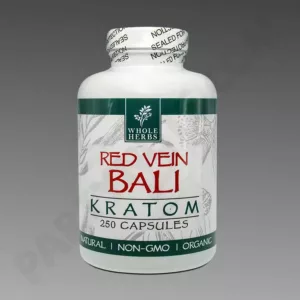
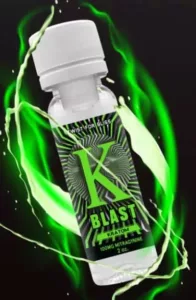
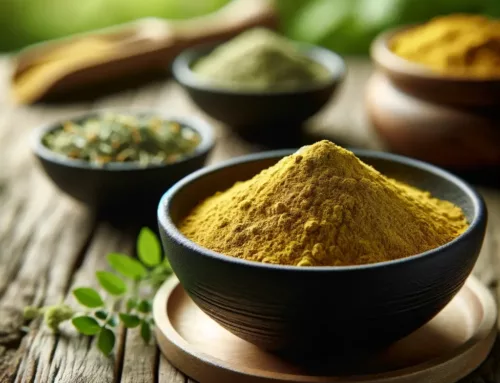
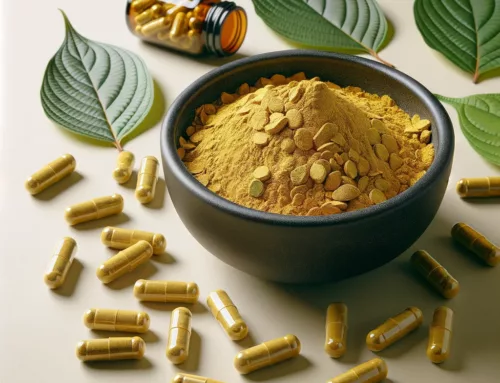
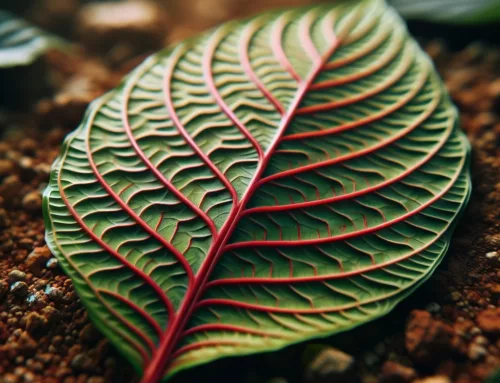
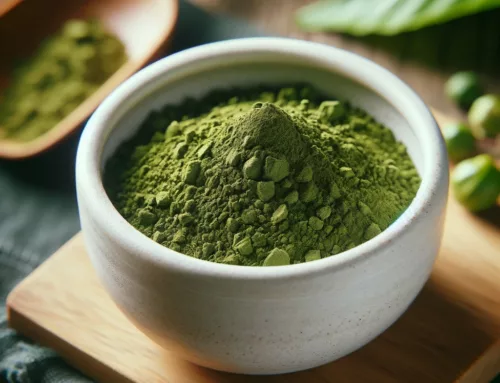

Wow I had no idea that kratom exists and what effects it has on our health system. I also have never thought about addicts getting into a habit of taking drugs by starting with prescribed medications. That’s actually insane that a huge percentage of the addicts are actually at that place not wanting to be there.
With the opiate abuse explosion around the world it is important to find ways to help people get off them and kick the addiction. If kratom truly can help people become successful at this then it would be a miracle herb. One of my family members had serious opiate withdrawals after surgeries, so kratom could have helped him.
I love these types of articles. The ones that inform you about the healthy stuff. I must admit that the articles that you post or some thing that I like to come and read on a weekly basis. You’ve absolutely hooked me onto your findings of Kratoms Because you seem to be such an expert at this. Thank you so much for this article and for sharing this with all of us today
I apologize for my comment in the other post about where to buy it and how to ship it and such…I myself am, a “street-junky” and started using pills to cope with an accident and, upon their cessation, was left with little option but to transition to heroin in order to avoid the pain of withdrawal. I am absolutely not making excuses for myself, that’s just the way it all happened. I have thought about, and tried, to quit several times and somehow keep going back. Truthfully, I never make it further than 1 month because little known to others who are not themselves addicts, the month AFTER the hardcore withdrawals is the hardest part in quitting altogether. Many people, including myself, end up in a battle with their subconscious in trying to decide the value in their lives and usually end up giving in. Kratom IS something I’ve heard of before, though I completely forgot about it until I read this article, I bookmarked the page and will be doing some more research but ultimately, will be giving it a shot hopefully sometime soon. thank you for the article and the compassion to us street junkies. it is deeply appreciated:)
Hi & thank you for sharing your article with us. I love to read and gain knowledge about this amazing plant Kratom.
Another awesome article “Best Kratom for Opiate Withdrawal” really interesting and well describing. I wish I can have it just 1 Kratom tablet right now as I have a terrible migraine and is so painful. I like how you structured very well from the very beginning with the table of content and then you start explaining every single sub-category.
I have had no idea that out there there is a Kratom for opioid withdrawal Wow. That’s super. I also like how you end up your article and tell your audience to contact their physician in order to get a substitute for opiates.
My question again, how can I get Kratom to be delivered straight away in Europe at a reasonable price with delivery?
Thank you & many blessings to you.
Hi Angell,
Your kind words mean a lot to us along with finding this article and others on our site useful.
We have an excellent article that discusses kratom internationally.
We also talk about kratom in the USA as well.
Kratom and Legal Concerns – Domestic and International Laws – My Kratom Club
Hope that helps clarify the legality of kratom in Europe for you.
It was an eye-opener for me to read that so many addictions come from the use of prescription medicines. You would think that either the doctor or the instructions would warn you of that. Anyway, I will take this to my heart. Who comes to mind is Jordan Peterson who received some barbituates for his anxiety issue and became addicted very quickly. Boy, did he have an effort to get off of it. Could Kratom also have helped him?
I have lived in Thailand for 18 years and never heard of this, so I am going to ask around (not that I am addicted).
Hey there Jerry.
Great question and happy this article was an eye-opener for you.
We have received customer feedback that kratom has changed the lives of those addicted to opiates.
However, it is important to note that kratom is an herbal supplement and is not approved by the FDA.
Speaking with your physician is best to be sure it is okay for you to take and of course not self-medicating.
You can take a look at our site to read about some of our customer’s life-changing kratom stories.
If you have some time to read some of them we would love for you to share them and less us know your thoughts.
There are some powerful stories.
Hopefully, the above information was able to answer your question. If not please reach out to us through our contact page HERE.
Oh wow, I had no idea this could be used for opiate withdrawal. I recently learned that a friend had been struggling with addiction for months during the pandemic lockdowns. It’s a shocking thing to realize that a friend is hurting so much, and a helpless feeling to not know how to be a resource that helps them to get back on their preferred path. Mostly I know I can offer support and friendship, but knowing how hard each day can be for them, I’ll definitely pass along this information that could bring some much-needed relief too.
Thank you.
This was very interesting to read that 29% of opioid addicts, are actually addicted to prescription medicine, rather than being a street junkie. To be able to use a herbal supplement like kratom to help with withdrawal symptoms, is awesome. Amazing that the alkaloid receptors in the brain, work the same with kratom, as with opium.
Thank you for a very educational post and it will indeed help anybody that wants to give up their addiction to opioids.
I love this site! I know 2 people, one of them being my son, that have started using Kratom. They weren’t “addicted” to pain killers yet, but becoming very close. I honestly don’t know how they found out about Kratom, I only know that they had to try a few different ones to get the results that they needed.
The quality of the product definitely makes a difference. I guess like anything else, what you get is what you pay for. This stuff works wonders for pain management, as well as anxiety. That is what I know this to work for.
I do wish that more people would learn about this, as it really does help. It would be so nice to have less opioid addiction, as it so very hard to break.
~Haze
Thank you Haze for sharing the positive experience your son has had with Kratom.
Just like you, we wish there was more knowledge and information about kratom out there to be sure people are being safe and responsible and understand the benefits.
If interested please join our Facebook group HERE to find other like-minded and kind people.
I didn’t know that pain killers and prescription drugs can cause people to become addicted. What a surprising revelation. We all take our meds without the least thought that maybe we could become dependent on them.
Thank heavens I read your article because it will make me aware of this and ensure that I do take care not to get addicted to normal medicines. Also, kratom being an alternative is good news.
Regards,
Aparna
Hi Friend
Thanks for sharing your views on best kratom for opiate withdrawal. As per my opinion, anything herbal which can assist in withdrawal of opiate should be considered. Kratom being the natural substance can give a new hope to the people who wish to stop addictions of pain killers. The only precaution we must take is that the addiction must not transfer from opiate to kratom.
Warm Regards,
Gaurav Gaur
We could not agree more Gaurav.
Kratom for the most part has shown to be safe when used responsibly.
You can take a look at our kratom dosage guide HERE.
We also discuss kratom and addiction in the article HERE.
On a final note, it is important that we mention kratom is not to be used to replace any medications and/or to self-medicate.
It is very important to consult your physician prior to using this herbal supplement.
Hope you find this information and the article links useful.
Thank you for this insight on kratom. The more the knowledge of supplements from herbal leaves the better. Expecially supplements like kratom that do not make high. Top of it is the fact that either it is too high or too low in dose it only activates the mu and delta receptors. I love it when you said there are no serious side effects from kratom
Hello, pleased to meet you. I read your article about the best kratom for opiate withdrawal. I found it really helpful. I must say that it is true that we use painkillers for a long period of time and end up addicted to them. I am one of those who depend more on painkillers because of my painful joints. But I think today I am here at the right time. Kratom is my answer and I must get it very soon. Thanks for sharing this beautiful piece of writing, I will be sharing it further too.